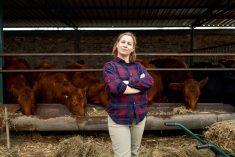The tight supply situation in Canada is creating challenging industry dynamics. On one hand we are encouraged by strong prices for fed cattle and cows, while on the other, packing plants feeling the pinch of reduced supplies are taking steps to control operating costs. In February, Canadian packing plants went to four-day weeks, which is clearly not a sustainable solution, as we saw recently with the closure of XL in Calgary.
At the same time, rising costs for feed grains and other inputs will undoubtedly take a bite out of producer profitability, which remains under pressure from the strong Canadian dollar and lingering competitiveness issues.
Read Also

A strategic approach to risk on the ranch
Given the increase in the value of livestock and the market volatility, we need to cover our risks. First,…
As we head into what most analysts consider uncharted territory in this current cattle cycle, the relevance of the CCA’s priority issues for government become increasingly important. Now is the time to address the factors contributing to a lack of competitiveness in the Canadian cattle feeding and beef processing sectors to ensure the long-term sustainability of the industry. The CCA will work with the new government to advance on these priority issues.
The harmonization of regulation with the U.S. is a good place to start. In particular, the higher costs of collecting and disposing specified risk materials (SRM) in Canada compared with the U.S. has created a competitive disadvantage for Canadian packers and producers that reduces profitability and encourages live cattle exports to the U.S. Harmonization is needed around SRM use as well, and we continue to ask that Canada remove the prohibition on using SRM meat and bone meal as fertilizer as a way to restore value for the SRMs.
The U.S. mandatory country-of-origin labelling (COOL) requirement to label meat with the country where the animal was born has resulted in discrimination against Canadian livestock. A WTO decision on COOL is expected soon, which hopefully will move the issue toward a resolution.
The full restoration of access for beef products from cattle of all ages to top-priority markets is crucial. Economically viable access to premium markets to increase the value of all of the products that we harvest from each animal is an important mechanism to improving competitiveness.
Research focused on improved productivity, increasing feed production and enhancing quality and safety will be integral to ensuring the competitiveness of the cattle and beef sector into the future. Several other recommendations are made with respect to cross border regulatory co-operation, the impact of government biofuel policies on the competitiveness of cattle producers and environmental sustainability.
Having these issues addressed would go some distance in creating the environment where producers expand their herds, which is crucial to the long-term sustainability of our industry.
Statistics Canada’s Jan. 1 inventory numbers show that beef cow inventories across Canada continued to drop. Many provinces reported the smallest numbers in a decade and in some instances numbers near or at record lows. Poor profitability in recent years, combined with strong cow prices, have encouraged marketings, especially among older cows. Although the inventory numbers show a small increase in the number of heifers expected to calve this spring, current bred heifer inventories are at a 20-year low. This means the supply will have to increase substantially, along with reduced cow marketings, before an increase in beef cow inventories can be realized. In short, it will take several years before an expansion in the Canadian herd is seen.
Reductions in herd inventories are occurring in beef cattle producing countries around the world, and with that trend, global beef supplies will continue to tighten. In North America, the supply shortfall will continue to impact packing plants, particularly those with a focus on cow slaughter like the XL plant.
U.S. research indicates that packing plants need to operate at 90 per cent utilization or higher to be efficient, with per unit costs increasing rapidly below that level. In the first quarter of 2011, Canadian federally inspected slaughter declined 9.7 per cent to 54,000 head per week compared with the year earlier period. This resulted in plant utilization rates falling to 71 per cent in the first quarter 2011 from 82 per cent in 2010.
This situation is particularly acute in cow slaughter which is down 15 per cent this year and down 21 per cent in Western Canada.
The current situation behooves businesses to take aggressive steps to increase efficiencies. A larger plant only makes sense if it is operating close to capacity in order to reduce the average cost per head. Of course, as cattle supplies fluctuate throughout the cattle cycle, utilization levels and per unit costs will fluctuate as well.
As Canada enters a period of small supplies in the cattle cycle, per unit costs will increase. It remains to be seen how Canadian packers will stay competitive in a North American industry that is characterized by overcapacity as a whole.
I believe the next few years hold tremendous potential for Canadian cattle producers. With the goal of maximizing this industry opportunity, the CCA will continue to push its priority issues to ensure the competitiveness of the Canadian cattle and beef processing sectors.
———
TravisToews ispresidentof theCanadian Cattlemen’s Association















